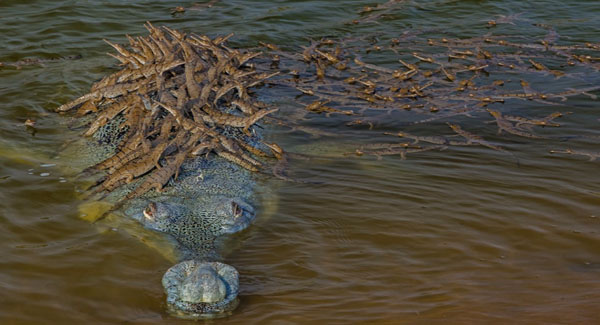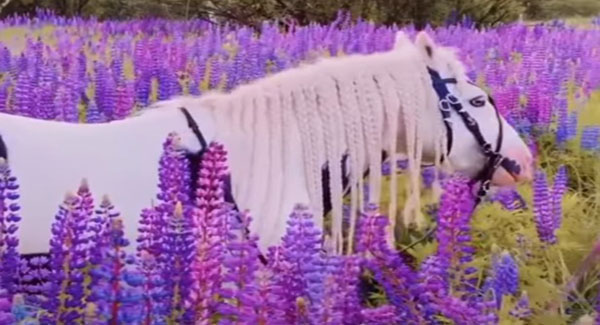Proud Crocodile Father Gives A Piggyback Ride to Over 100 of His Children

Meet Dhritiman Mukherjee, a talented Indian wildlife and conservation photographer who has dedicated his life to the protection of animals. 20 years and 280 days of the year spent in the field, it’s no surprise he has seen his fair share of ᴀᴍᴀᴢɪɴɢ moments. Our favorite is this spectacular picture of an ᴇɴᴅᴀɴɢᴇʀᴇᴅ crocodile captured carrying his babies through the water.

Mukherjee’s photograph shows a male gharial giving a ride to more than 100 of his babies. The photo was recently named on the highly commended list of the prestigious Wildlife Photographer of the Year contest run by London’s Natural History Museum. Mukherjee’s ability to capture this special moment is made all the more intriguing when one considers that the gharial is a critically ᴇɴᴅᴀɴɢᴇʀᴇᴅ species. Also known as a fish-eating crocodile, gharials are part of the Crocodilia order. In fact, they’re one of the largest living crocodiles. Evolving from the northern Indian subcontinent, this ancient species was first depicted over 4,000 years ago. Unfortunately, its population declined dramatically in the 1930s and, by the 1980s, captive breeding programs were put in place in India and Pakistan. Still, the gharial continues to sᴛʀᴜɢɢʟᴇ due to habitat loss and depletion of resources. These sᴛʀᴜɢɢʟᴇs are perhaps what makes Mukherjee’s photograph so heartwarming. Here, we see a father giving the ultimate piggyback ride to his month-old children. He’s certainly doing his part to help out the population, which has dipped from 20,000 across southern Asia to just under 1,000 in a small concentrated area. “This male had ᴍᴀᴛᴇᴅ with seven or eight females, and you can see that it was very much involved,” shares Mukherjee. “Normally the gharial is quite a shy crocodile compared with the saltwater and marsh crocs. But this one was very protective and if I got too close, it would charge me. It could be very ᴀɢɢʀᴇssɪᴠᴇ.”

It’s not unusual for crocodiles to carry their young, but they would usually use their mouths to transport their young. Due to the gharials odd shaped snout, this wouldn’t be possible, so they resort to other means, just as you can see.




